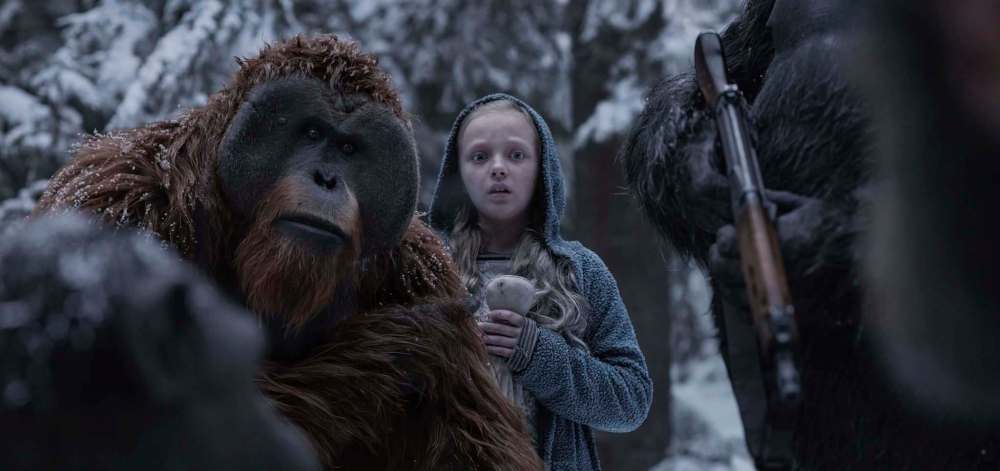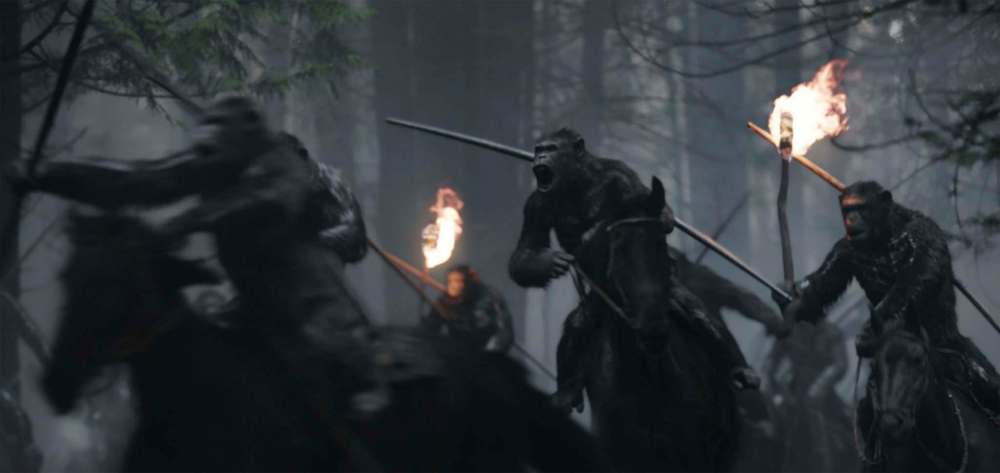Aping the human condition
Remade series shows sequels can be more than bank-account padding
Advertisement
Read this article for free:
or
Already have an account? Log in here »
To continue reading, please subscribe:
Monthly Digital Subscription
$0 for the first 4 weeks*
- Enjoy unlimited reading on winnipegfreepress.com
- Read the E-Edition, our digital replica newspaper
- Access News Break, our award-winning app
- Play interactive puzzles
*No charge for 4 weeks then price increases to the regular rate of $19.95 plus GST every four weeks. Offer available to new and qualified returning subscribers only. Cancel any time.
Monthly Digital Subscription
$4.99/week*
- Enjoy unlimited reading on winnipegfreepress.com
- Read the E-Edition, our digital replica newspaper
- Access News Break, our award-winning app
- Play interactive puzzles
*Billed as $19.95 plus GST every four weeks. Cancel any time.
To continue reading, please subscribe:
Add Free Press access to your Brandon Sun subscription for only an additional
$1 for the first 4 weeks*
*Your next subscription payment will increase by $1.00 and you will be charged $16.99 plus GST for four weeks. After four weeks, your payment will increase to $23.99 plus GST every four weeks.
Read unlimited articles for free today:
or
Already have an account? Log in here »
Hey there, time traveller!
This article was published 13/07/2017 (3098 days ago), so information in it may no longer be current.
As we hit peak summer movie season, it’s not a bad time to remember that sometimes a franchise can be used not just to recycle old ideas and mint money. Sometimes a sequel — or even two — can be used to further explore important ideas and develop complex characters.
The Apes trilogy, which culminates with uneven but undeniable power in this final instalment, really belongs to Caesar, a father, husband and friend, a political leader and military strategist who just happens to be a chimpanzee. Brought to life by the astonishing Andy Serkis in a hybrid performance that combines compelling, subtle physical and vocal work with motion-capture technology and animation, Caesar has been evolving — so to speak — over the course of three films.
War for the Planet of the Apes (directed and co-scripted by Dawn of the Planet of the Apes helmer Matt Reeves) opens mid-action, two years into the battle between the ragged remnants of humanity and the increasingly ascendant apes. The conflict was started in the last outing by the damaged, vengeful Koba (Toby Kebbell), and Caesar must reluctantly finish it. His chief adversary, known only as the Colonel (Woody Harrelson), is an isolated madman obsessed with building a wall. (Hmmm.)
As a background to the war story, we see that while most of the apes still use a form of sign language (subtitled for viewers), a few more are starting to speak aloud like Caesar. Meanwhile, some humans have somehow lost their voices, including a young orphaned girl (Amiah Miller) who is picked up by Maurice the orangutan (Karin Konoval), that big orange softie.
Clearly, we are moving toward a world recognizable from the original 1960s and ’70s flicks, and fans of the classic franchise can look for origin stories for both Nova and Cornelius.
Alongside its intense and well-executed action scenes, War continues the new trilogy’s commitment to serious themes. Rise of the Planet of the Apes touched on ideas of animal rights, and Dawn of the Planet of the Apes looked at the dangers of xeonophobia and bigotry in both ape and human societies. This story examines the roots of warfare and the cost of vengeance.
Reeves references films such as Spartacus, The Great Escape and Apocalypse Now, the latter ruefully acknowledged with a scene of simians trudging past graffito announcing the “Ape-ocalypse.” There’s even a smidgen of The Ten Commandments, suggesting there’s more Charlton Heston to Caesar’s character than you might expect.
Of course, War for the Planet of the Apes is serious, but at the same time slightly bonkers. This is a movie about talking apes, after all, and weighty historical references to slavery and concentration camps, seen in the dark and disturbing middle section, sometimes rub up uneasily against the franchise’s hairier, pulpier pleasures. There’s also a little too much Tropic Thunder going on, with a tendency for slow-motion combat scenes, with wounded heroes, assumed dead, emerging from smoke amid overwrought orchestral swells.

This tonal wobbliness is exemplified by Steve Zahn’s Bad Ape, a rather touching character who is too often used as a cheap-laughs sidekick straight out of an old Western serial.
Harrelson seems to be having a ball. In a further nod to Apocalypse Now, his Colonel has gone full-on Kurtz in his remote mountain outpost, ominously shaving his head with a straight razor and even talking with Brando-like inflections at times.
Ultimately, though, the film comes down to Serkis, also known for his role as Gollum in The Lord of the Rings series. It is because of Serkis’s nuanced and emotionally affecting work that in a showdown between people and apes, our sympathies are with the apes. In all the ways that matter, they are more human than the humans.
alison.gillmor@freepress.mb.ca



Studying at the University of Winnipeg and later Toronto’s York University, Alison Gillmor planned to become an art historian. She ended up catching the journalism bug when she started as visual arts reviewer at the Winnipeg Free Press in 1992.
Our newsroom depends on a growing audience of readers to power our journalism. If you are not a paid reader, please consider becoming a subscriber.
Our newsroom depends on its audience of readers to power our journalism. Thank you for your support.
History
Updated on Friday, July 14, 2017 7:25 AM CDT: Formatted.

